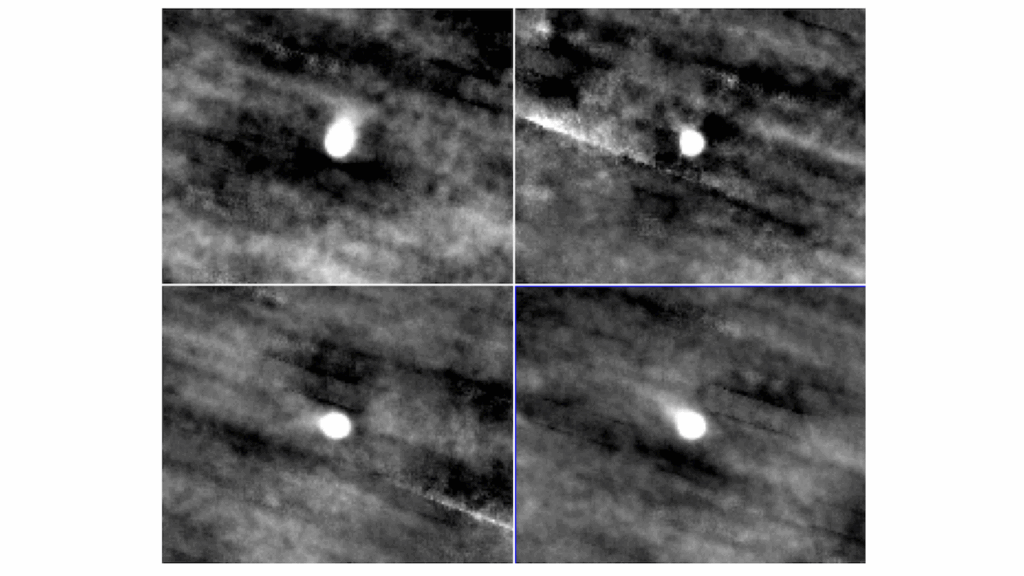Hunting for Hydrated Minerals on Trans-Neptunian Objects

We present new optical reflectance spectra of three potentially silicate-rich Trans-Neptunian Objects (TNOs). These spectra were obtained with the aim of confirming past hints and detections of 0.7 micron absorption features associated with the presence of iron-bearing phyllosilicates.
Our new spectrum of 120216 (2004 EW95) presents clearly detected absorption features that are similar in shape to hydrated mineral absorption bands present in the spectra of aqueously altered outer-main belt asteroids. Four new reflectance spectra of 208996 (2003 AZ84) obtained at separate epochs all appear featureless, but vary significantly in spectral gradient (between approximately 3.5 %/0.1 micron and 8.5 %/0.1 micron) on a timescale consistent with this object’s nominal rotational period.
We report the first four optical reflectance spectra of 90568 (2004 GV9), finding them all to be featureless but consistent with colors previously reported for this object. We speculate that impacts are the only mechanism capable of delivering, excavating, or forming hydrated minerals at the surfaces of TNOs in detectable concentrations; as a result, any deposits of hydrated minerals on TNOs are predicted to be localized and associated with impact sites.
Globally altered TNOs (as observationally suggested for 2004 EW95) plausibly formed more easily at smaller heliocentric distances (< 15 au) before being transplanted into the current Trans-Neptunian population.
Tom Seccull, Wesley C. Fraser, Dominik A. Kiersz, Thomas H. Puzia
Comments: 25 pages, 7 figures, 6 tables, accepted for publication in PSJ
Subjects: Earth and Planetary Astrophysics (astro-ph.EP)
Cite as: arXiv:2312.11646 [astro-ph.EP] (or arXiv:2312.11646v1 [astro-ph.EP] for this version)
Submission history
From: Tom Seccull
[v1] Mon, 18 Dec 2023 19:01:21 UTC (1,643 KB)
https://arxiv.org/abs/2312.11646
Astrobiology, Astrochemistry,








